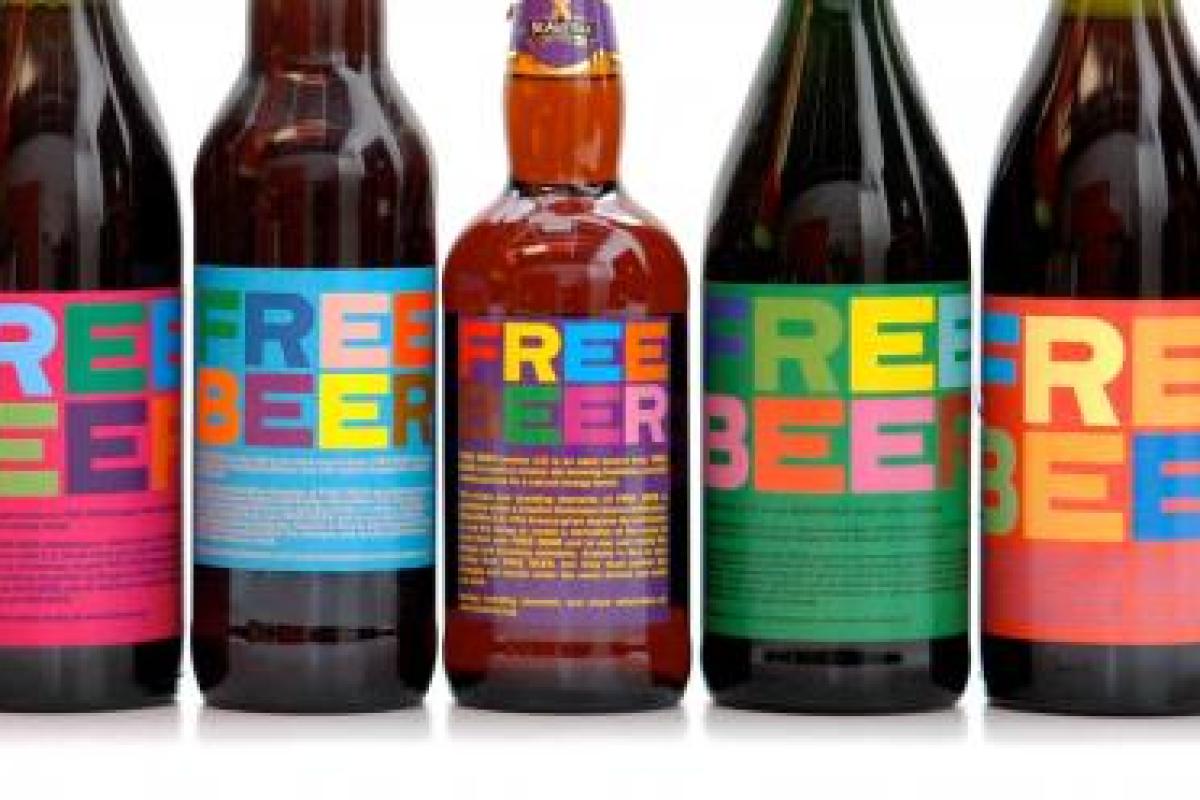YOGA BEER + CREATIVE THINKING
2.2 billion hectolitres of beer are consumed across the world each year. Whilst the Germans drink more than anyone, 110 litres per person each year, it is China that boasts the world’s biggest selling beer. Snow Beer, cheap and decidedly watery, is produced in a joint venture with SAB Miller, and has 5% of the global market.
This is a market dominated by big breweries, and big brands … Wrong! The beer market, like most markets, is fragmenting rapidly. Craft beers made in microbreweries, serving local or niche audiences, delivering quirky products and in new contexts. This new market diversity changes attitudes - price becomes premium, products becomes experiential, from repetition to exploration.
This is a market dominated by big breweries, and big brands … Wrong! The beer market, like most markets, is fragmenting rapidly. Craft beers made in microbreweries, serving local or niche audiences, delivering quirky products and in new contexts. This new market diversity changes attitudes - price becomes premium, products becomes experiential, from repetition to exploration.
Beer symbolises the shift from markets of “average products for average people”, to markets of discerning individuals, seeking difference and relevance.
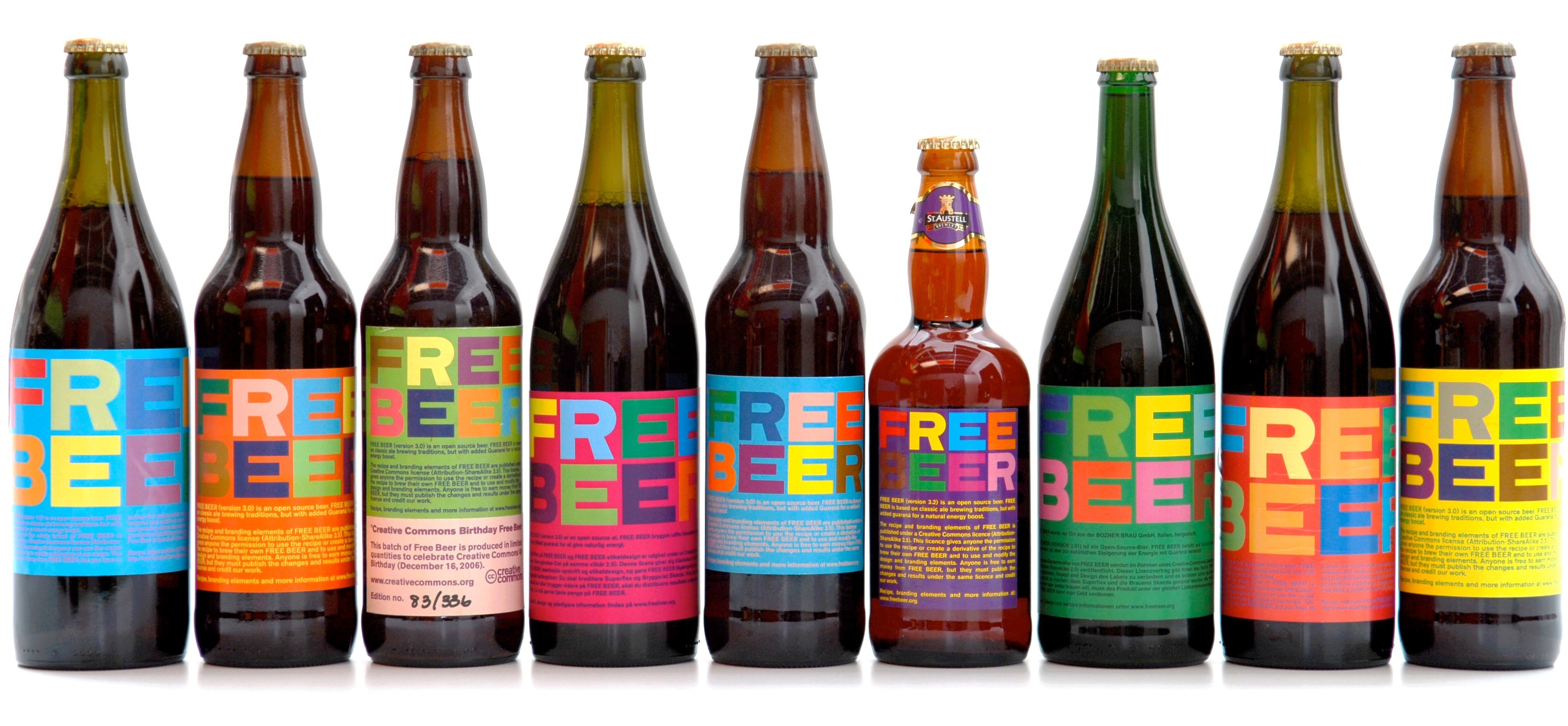
So how do you win in this new world? Last month I was at IMD Business School, on the banks of Lake Geneva exploring how to “change the game” of beer with one of Europe’s leading brewers. To spark our creativity, we sought to apply ideas from other sectors … to give it away free (then find a new way to make money, like Metro newspapers), or build a subscription model (like Nespresso with its coffee pods), or connect users around a shared passion (like Nike+), or pay as you go (like Psonar selling music for a penny a track), or build a network of branded spaces (learning from Tesla’s Supercharger network).
Using the Gamechanger framework from my new book, we explored some recent beer innovations. Change the who … Lululemon, the women’s sportwear brand from Canada, has just launched its Yoga Beer, with 77 calories plus added nutrients to aid your post work- out recovery. Change the why … Problem Solver Beer from the Denmark promises to boost your brain, by helping you think bigger, different and make new connections. Change the what … Moa Beer, perhaps the world’s best beer, made in the finest New Zealand wineries, offers ultra-premium brews and packaging, starting at breakfast time. Change the how … Scotland’s Beer52 offers an annual subscription for a crate of mixed craft beers delivered to your door each week, adding surprise and exploration to my beer.
Nobody is average, and neither should any business. Consider then how you could “change the game” in your market - the who, why, what and how - reaching out to new audiences, with new purpose, redefining your competitive set, getting out of a downwards price spiral, and delivering more distinctive and relevant brands and experiences. It might just become your new compass for profitable growth!
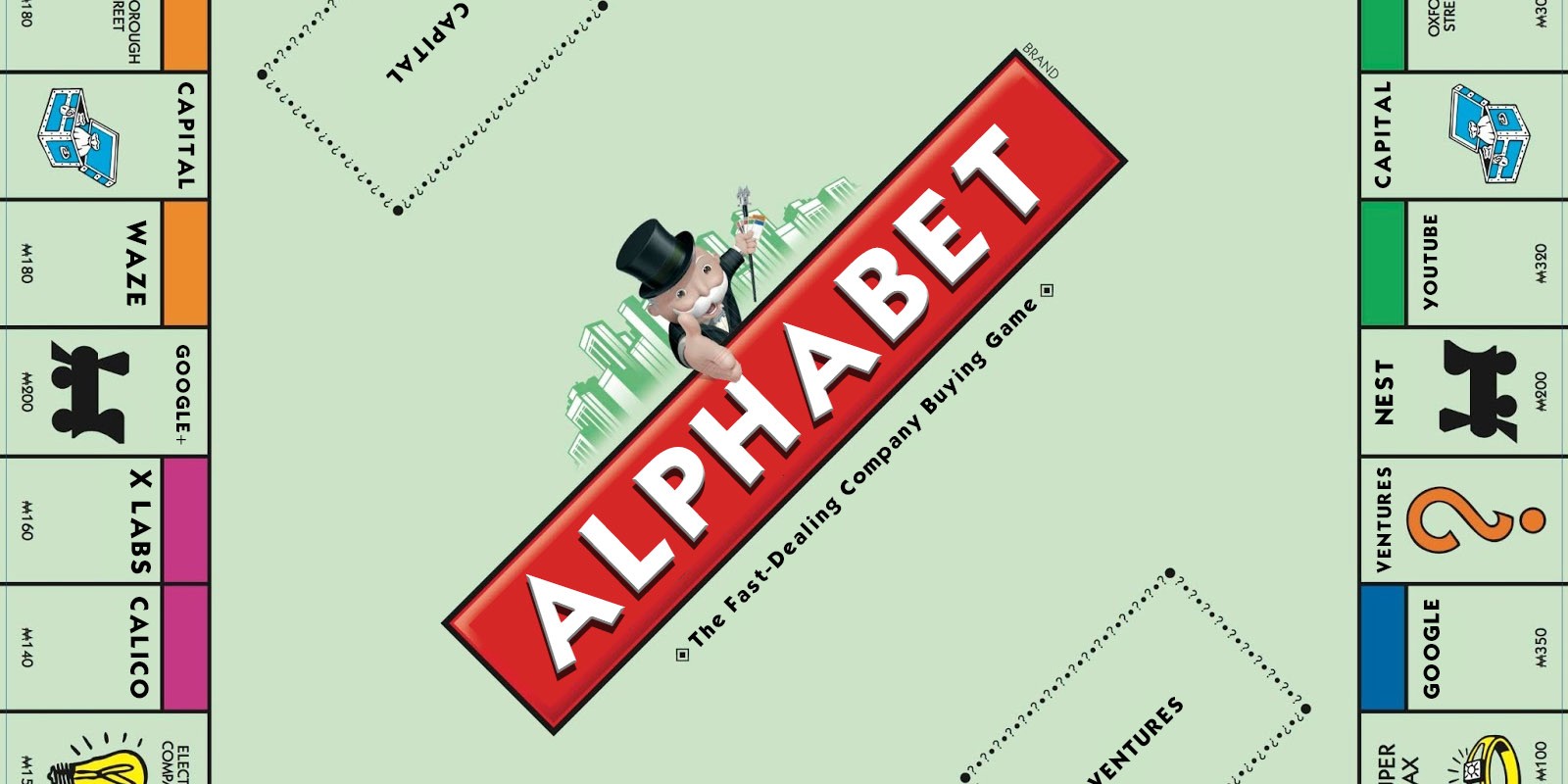
INDIAN LEADERS + LIVE-STREAMING
Google became Alphabet recently, with the new corporate brand reflecting the diversity of businesses under Sergey Brin’s leadership - from Calico (biotech focused on slowing aging), to Nest (intelligent homes), Wing (delivery drones) and YouTube (which has just
launched a gaming platform). The new organisation, and the “house” brand architecture, is clean and simple reflecting Brin and Page’s mission to organise the world’s information.
Alphabet still includes Google, the search business, which gets more focus (and a new font!) under former product manager (and ex-McKinsey consultant) Sundar Pichai. He is one of many Indian-born CEOs - including Microsoft’s Satya Nadella, Pepsico’s Indra Nooyi, Mastercard’s Ajay Banga and Deutsche Bank’s Anshu Jain - bringing new attitudes (humble, collaborative), new skills (typically engineering) and new perspectives (of emerging markets) to the leadership of many of the world’s biggest companies.
“Out-thinking” your competitors is the best source of advantage in such a fast-moving tech- fuelled world, and in particular how you connect and apply these new technologies. When Twitter saw the challenge of Meerkat, a new app sending live streamed video to Facebook, it had to think differently. Within weeks it had snapped up Periscope, a similar business, for $100 million - before it was even launched. Kayvon Beykpour’s inspiration for the live streaming app came from Istanbul’s Gezi Park protests two years ago, and the desire to share live events with the world. As demonstrated by Snapchat, video has replaced instant messaging, which replaced archaic media like email. Periscope is currently the fastest growing platform in social media, with clear opportunities to for real-time marketing, connecting brands with live and topical events, more relevant and personal.
GRAINS OF RICE + EXPONENTIAL GROWTH
Uber is a great example of an “exponential organization”, a term coined by Salim Ismail, another Indian, former VP of Yahoo!, and leader of the NASA-inspired Singularity University.
Since Uber’s launch by Travis Kalanick five years ago - loved or loathed - it is now in over 300 cities across 60 countries, with an estimated value of $50 billion.
As I check my smartphone, and see the little cars driving along roads within minutes of me, and at fares typically half the price of regular taxis, it is amazing to think how a company with a mobile-centric platform, and few physical assets, can scale so quickly. Its simple and addictive. Even the dynamic pricing model has to be marveled at - prices can rise 10-fold at times of peak demand. The model is simple. Indeed, somebody is probably plotting the “uberfication” of your industry right now … although it might be Kalanick himself, who has just launched UberEats, soon to be the world’s largest home delivery food service.
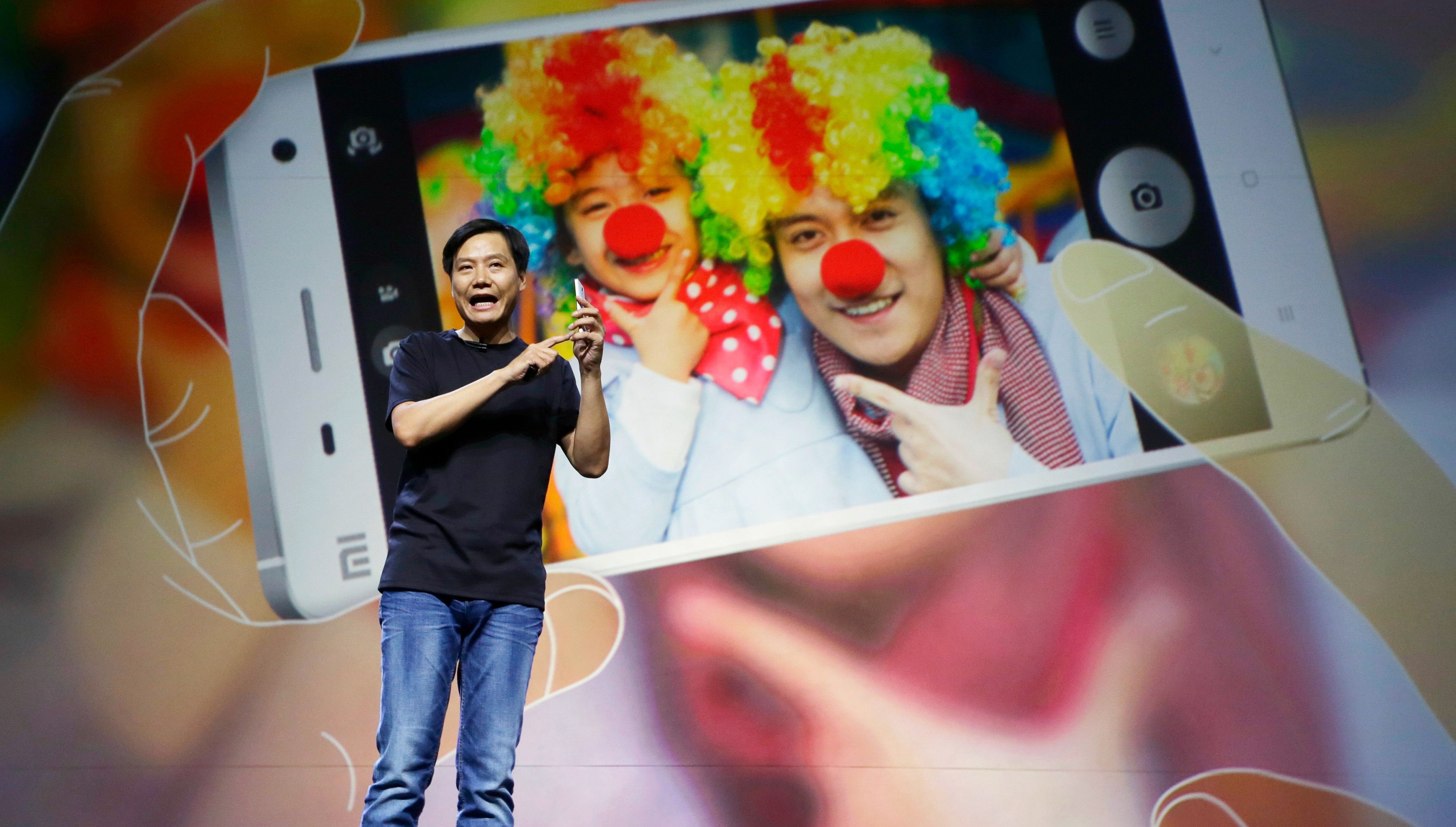
Chinese electronics business Xiaomi is even more exponential than Uber, having grown to a $67 billion valuation since launching its first “MiPhone” 4 years ago, an Android smartphone that looks remarkably like the iPhone. CEO Lei Jun says that "xiao" is about starting small the thinking big … "a single grain of rice of a Buddhist, is as great as a mountain" (“mi” stands for mobile internet). Xiaomi has been a sensation, recently selling a record 2.1 million handsets in a 24 hour flash sale (a marketing tactic that dominates in urban China), and becoming the world’s third largest smartphone maker. Jun is targeting emerging markets, having focused this year on launching into India and Brazil. Next year he launches a laptop, whilst investing heavily in content, from local language apps to TV.
One other Xiaomi product, launched last month, could actually change the world. The $15 MiBand fitness tracker does everything a Fitbit and Jawbone can do, but at a fraction of the cost. We already know (from Apple Watch) how wellbeing can engage new consumers in technology. Imagine the consumer base that MiBand could reach with such a low price point, the flow of personalized data that results from usage, and subsequent desire to connect to other devices. It might even be the “tipping point” for the internet of things, as well as Xiaomi’s grain of rice that turns it into the next Apple or Google, or both.
MILLENNIALS + ADVOCACY
Delivering the keynote speech at the launch of a $100m digital bank project, I listened to the strategy to target “millennials”. First up were a range of new savings products, and then a new mortgage proposition … Errrr … do we really think that this new generation have the same needs and aspirations as existing customers (average age 47 years old)? Are we really customer-driven, or just planning the same old thing with a new digital platform?
Millennials - defined as those born between 1980 and 1997 - also known as Gen Y, Gen We, and Digital Natives - are by no means a homogenous tribe, but their attitudes and aspirations are quite distinctive. We recognize many of their traits - passionate and caring, life before work, spontaneity not planning, transient not permanent, global not local, social more than individual. They expect speed and simplicity but with limited patience - everything should work, instantly and intuitively. Especially online. Meaning, mobile.

New research by Goldman Sachs explores millennials as consumers. Everything revolves around them and their friends. Connected by their smartphones and networks. Consumption is driven by time and place, and influenced by others who they trust - advocacy. They prefer access over ownership - renting cars and homes - the collaborative economy. And they live active lives - casual fashion, wellness and sport. They also expect to live in at least 3 different countries during their lives, and likely to move through 7 distinct phases of career.
Additional research by Deloitte focuses on their demands as employees. They want to work for businesses that care, 75% believing companies are too focused on their own agendas. They want more challenging roles, and not to be at the bottom of an age or experience based “hierarchy”. They want to shape business for people like them (although they should remember there are many other audiences to engage too!). They, and particularly in emerging markets, prefer the energy of smaller and more entrepreneurial companies,
rather than big global corporations limited by culture, process and size.
Millennials are big on advocacy. When trust in brands is at its lowest ebb, yet trust in peers (friends, colleagues, people like you) is sky high (according to Edelman’s Trust Barometer), advocacy matters more than ever. This is not just a shift from measuring satisfaction to recommendation (or Net Promoter Score), but fundamentally redesigning communications, channels, relationships, and in particular (outdated) loyalty programs. If people trust people, not brands, then their loyalty is to each other, facilitated by the brand. Their impulse to buy is not advertising, but the encouragement of peers, and their preferences and choices are based on stories and experiences of others. Indeed they are more likely to want to share than buy - to share their possessions through rental (Zilok) or repurchase (Bepop), to share their passions through communities and activities. Far beyond a Facebook page, need to innovate marketing to enable people to connect and collaborate and do more.
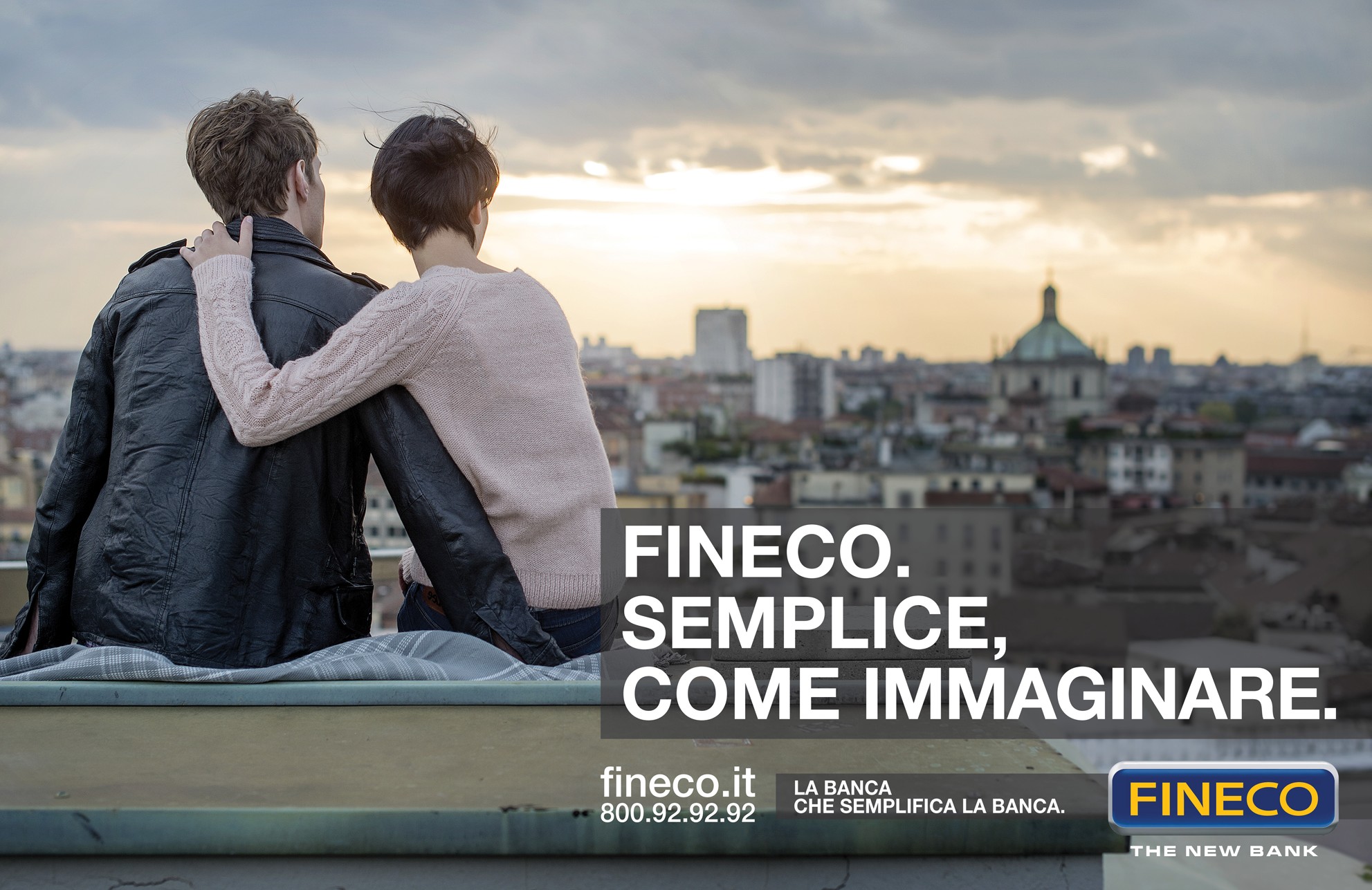
So which brands have the highest levels of advocacy in today’s world? The new Global Advocacy Index by BCG throws up some interesting results … Overall, the most successful brands included Fineco (an Italian bank focused on how money helps people do more), USAA (the American insurance business, with particular strength in schemes for specialist groups of people), and Simyo (the Spanish telecoms that offers an incredibly simple SIM- only pay as you go model). Advocacy is highest in Spain and Italy, driven by people with passion, and lowest in Japan, driven by a more traditional and acceptant culture.
One high scorer in the report, that wont be getting such good recommendations right now is Volkswagen. Whilst the fall-out from its emissions scandal continues, it is not just the penalties and compensation claims that could amount to $10 billion. The reputation damage to its brand, and subsequent loss of advocacy, are likely to cost it twice as much in lost future earnings and diminished market value.
DESIGN THINKING + NEW BUSINESS MODELS
Whilst the best ideas and innovations might seem to be the monopoly of digital start-ups, there is no reason why more established, and physical, businesses can’t be as successful. This is the premise behind a new business innovation program that I am currently facilitating for business leaders across Europe. It brings together the disciplines of design thinking and new business model to develop gamechanging strategies for more dramatic and sustainable growth. In three phases it is co-located at the Hasso-Plattner Institute in Potsdam, Madrid’s IE Business School, and Nordic Executive Academy in Kolding.
Design thinking is a funky name for a simple approach to problem-solving that can be applied to any aspect of business, not just products. At its heart are three simple principles - human, creative and real - learning from the customer’s world (deep diving into what really motivates to people, through practical observation and individual discussions), diverging before converging (giving space to explore new ideas, suspending judgement particularly on ambiguities), and then quickly making ideas tangible (through pictures, models and prototypes, which then become the focus for iterative development).
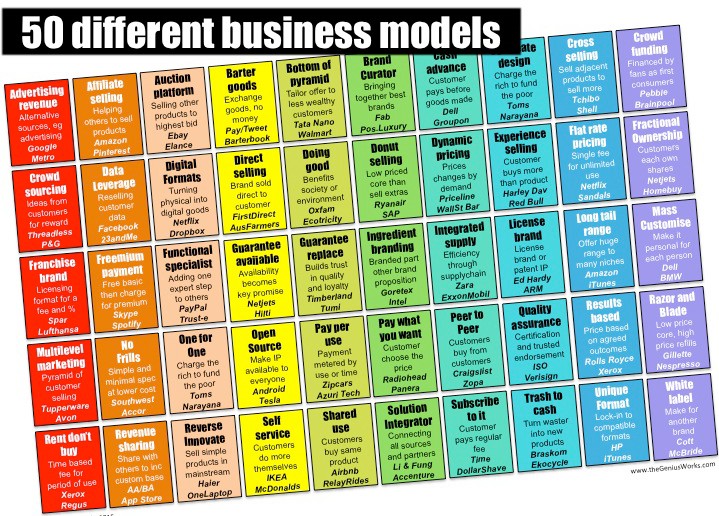
Similarly, business model innovation is not new. Back in the 1959, Xerox created an incredibly powerful copier, but found that few companies could afford the high price of the new machine. By moving to a subscription-based model, low rental fee then pay per copy above a certain number of sheets, it became attractive, and an incredible success. Combining design thinking, with the well-known approaches of Alex Osterwalder and others, we worked through an accelerated approach to creating their futures, inspired by new insights into their existing and potential customer, and parallels in other markets.
Learning from Li & Fung’s virtual sourcing network, an online optician is now exploring how to change its industry’s supply chain. Inspired by UberEats, a food producer is exploring new trends like street food and home delivery. With a touch of Tesla’s Supercharger Network, a power company is rethinking how to roll out charging models for everyday use.
Building on Cemex, a horizontal drilling company is focused on reducing flooding in areas at risk. Learning from construction firm Skanska, an ad agency is designing a new business model to share client success. Borrowing ideas from Jonny Cupcake’s t-shirt shops, an exhibition centre is rethinking its space and how to sell it, and the Nespresso business model is helping an industrial valve maker is to explore new markets.
Next step is to make the best ideas happen - that’s when we really start to be creative …
More about the Business Innovation Program at www.slideshare.net/geniusworks
HAIER + THINKERS 50
Talk of new business models takes us to China. Haier, now the world’s largest white goods business, recently celebrated 10 years of its Rendanheyi (or win-win) business model.
CEO Zhang Rhuimin sees the approach as a way to stay small and focused - maintaining the entrepreneurship, intimacy and speed of a start-up - despite now being a $32 billion multinational with 70,000 employees. Haier is actually a family of 200 micro-businesses, each largely autonomous, and 70% of them with revenues exceeding $20 million last year.
The Qingdao-based company has stretched far beyond its refrigerator origins of 1984, now on the cutting edge of robotics and connected home devices. Just this year it launched Coton, a pocked-size washing machine, ready for any emergency. Haier is a shareholder in each of its micro-business, alongside all of its employees, who share in their own profits. Rhuimin, who has seen Rendanheyi deliver 28% annual growth for the last 10 years, and profits grow by 1200%, is now looking to co-creation as the next phases in his journey, and for Haier to become leading player in the sharing economy.
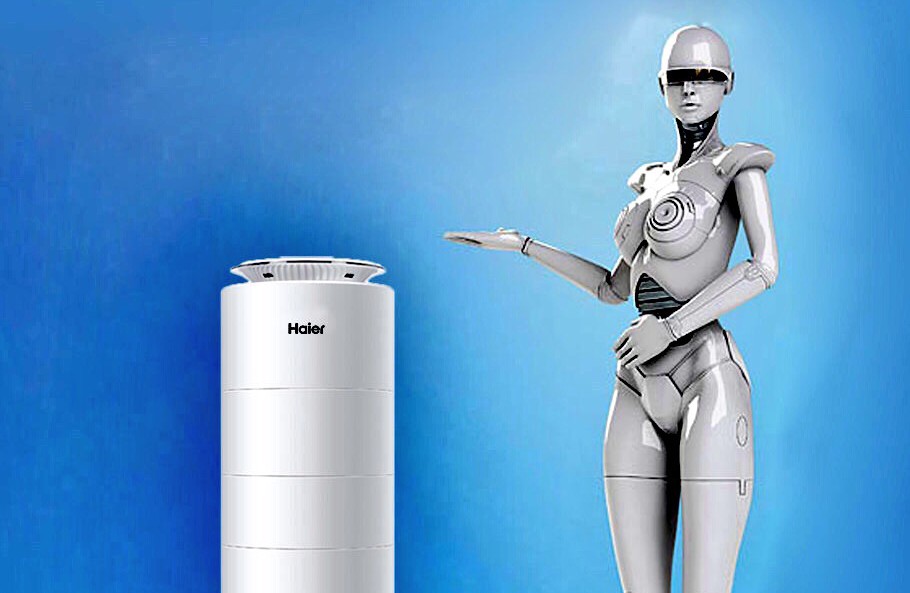
Haier is recognised in this year’s Thinkers 50 Awards, the bi-annual ranking of business gurus, often called the “Oscars of management thinkers”. Founded by British journalists Des Dearlove and Stuart Crainer, the list is the one that every business academic or author
wants to be on. Indeed the shortlists of thinkers, ideas, books and businesses, are certainly worth looking to for inspiration, and will culminate in a day-long festival of business brainpower in London next month.
Robin Chase, the co-founder of Zipcar (with a new book Peers Inc) will be up against the Queen of Collaborative Consumption, Rachel Botsman (who wrote What’s Mine is Yours). Whitney Johnson, the investment analyst who set up a fund tracking disruptive innovations with Clay Christensen, will be encouraging you to Disrupt Yourself (her new book), whilst Korean strategist W Chan Kim is still searching for Blue Oceans (uncontested markets). Al Gore’s former speechwriter and Whole New Brain thinker Dan Pink will be neurologically matched with Denmark’s very own “buyologist” (and neuromarketer) Martin Lindstrom.
Join me at the Thinkers50 Awards in London on the 9 November 2015. Check out the new rankings - and their big new ideas for business - at Thinkers50.com.
HEALTHCARE + FERRARI
Healthcare is another category being disrupted incredibly quickly - with the convergence of adjacent sectors, shifts in power and expectation - all fuelled by technology. I’ve probably done more work in healthcare than any sector in recent years, from Apotex in Canada to Almirall in Spain, and many others. Chronic disease is soaring, whilst aging puts new pressures on budgets, there is a shift to payment by outcomes, and demand for more personalised treatments.
It’s easy to get excited by the proliferation of digital platforms, from Apple to Epocrates, Mango and Scanadu, the future is about more than apps. Organova leads the world in the 3D printing of human organs, whilst Second Sight has found a way to give vision to the blind. Cleveland Clinic is an icon of patient-centric care, whilst recently launched Smile+ wellbeing stores include doctors, dentists and more. Not all solutions are sophisticated. Look at the recent Cannes Health Grand Prix winner, where a charity created the lucky “Iron Fish” for rural Vietnamese to throw into their cooking pots, a simple cure for iron deficiency.
Roche is a great example of big pharma’s attempts to “change the game”. The Swiss giant’s first disruptive move was to acquire biotech firms Genentech, which specialises in personalised therapies, and Japan’s Chugai. Most recently Roche invested in 23andMe, the DNA profiling business that will read your body’s future for $99, and PatientsLikeMe, the social network where patients share experiences with others like them. With the big data to focus on truly personal and predictive wellbeing, and the specialist products to respond, Roche is ready to engage the intelligent patient who is now in control.
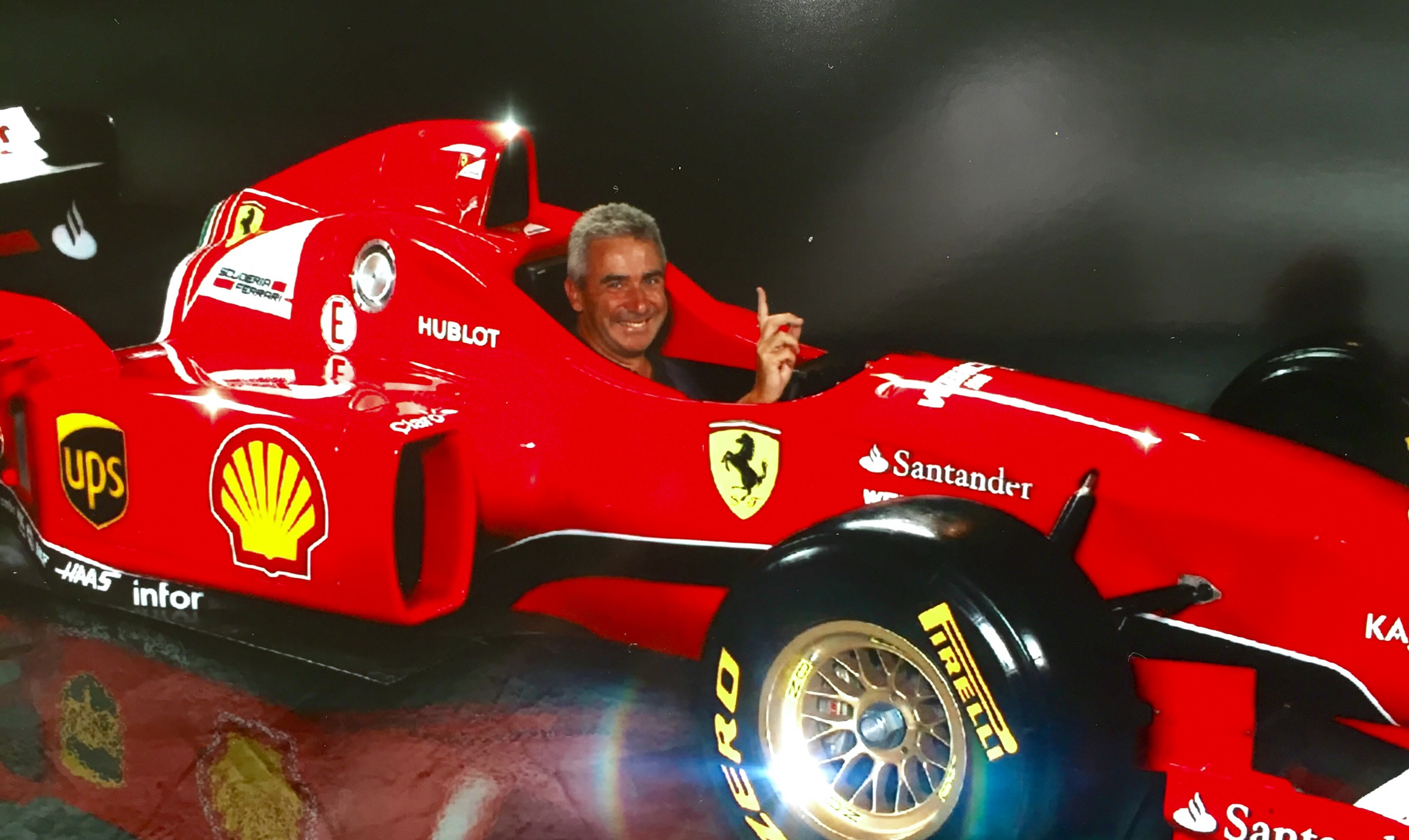
The best way to innovate is from the future back, thereby leap-frogging the distractions and incrementalism of today. One way to “find the future”, is to learn from parallel markets where businesses have already overcome similar challenges, and consumers adopted new behaviours (my friend Ramon Vullings has just published a great book on Cross Industry Innovation). Another way is to find extreme users.
Maranello in Italy, home of Ferrari, is certainly a place of extremes. The roar of over-tuned engines, and blur of de rigour red sports cars, seem at odds with the tranquil countryside. Enzo Ferrari always called his factory an innovation lab, always looking to push the boundaries. He described “extreme technology, beauty of design, and the emotion of driving” as the three enduring keys of the Ferrari brand.
With the cheapest model, the 458 Italia starting at $234,000, the sound of that perfectly roaring engine will still be the closest the majority of us will ever get to the Ferrari experience. Which is why brands like Ferrari are looking to innovate in new ways. The Brand Innovation Lab is all about innovation though the lens of the brand. The more the brand is about human aspirations, rather than product functionality, the more opportunity there is to innovate - both within and beyond the category, to enhance the customer experience, and to reach new audiences for profitable growth.
CHOPSTICKS + TREASURE HUNT
So what are the best marketing ideas around the world right now? From new products to innovative campaigns, new pricing models and unusual channels to market, where can we look for inspiration and ideas to apply to our businesses. Jules Verne set off on a voyage Around the World in 80 Days. I’ve just launched a modern day Treasure Hunt to bring together the 80 best ideas in marketing, and then sharing them over 2 inspiring days at the Global Marketing Summit that I will be chairing in Istanbul on 9-10 December.
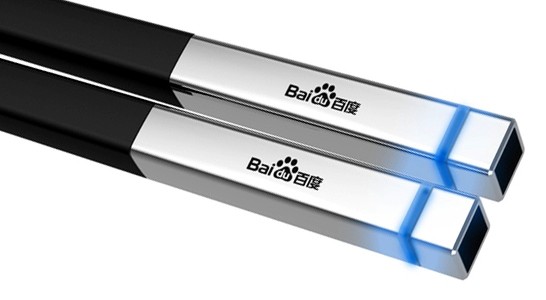
To help us, we’ve brought together marketing innovators from each part of the world. From Asia, Kaiser Kuo, Communications Director of Baidu will be joining me, talking about everything from the Chinese internet giant’s battle with Google, to the rapid growth of O2O (online to offline, offline to online) business models across Asia, Baidu’s smart chopsticks to detect unsafe food, and his Chinese heavy metal band. I will also be interviewing HRH Princess Basmah Bint Saud to explore the Middle East, with particular focus on the emerging role of women in business. Virgin’s ex digital guru Alex Hunter will be talking all things entrepreneurial USA, including his grassroots marketing model used by Virgin America to challenge the regulators, and Hamish Taylor, former boss of Eurostar will give a view from Europe, and what CEOs look for in great marketing ideas.
And to accelerate the search, we have two expert treasure hunters, Anouk Pappers and Maarten Schafer from CoolBrands in Amsterdam, who spend six months every year traveling around the world looking for the world’s next big marketing insights. They hang out with the most interesting entrepreneurs and business leaders, communicators and innovators, and then tell their stories. Each year they publish a coffee table book called Around the World in 80 Brands. But their insights go much deeper - into the culture of markets as distant and diverse as Rio de Janeiro and Shanghai - and into what drives personal and brand reputations in today’s hyperactive world.
You can join the Treasure Hunt by uploading the best marketing ideas you find around the world at TreasureHuntTurkey.com and coming along to the Istanbul event in December.
INSPIRING IDEAS + PRACTICAL ACTION
The only real way to understand changing markets is to get out there. In recent months I have worked with cruise lines and hotel chains, food companies and fashion brands, media and telecoms to explore their potential futures, develop more innovative strategies, and accelerate profitable growth … This is achieved through a burst of keynote energy and inspiration, a short workshop to change ambition and direction, or a fast and practical project, working collaboratively with your team to make real ideas happen.

Next stops for me include Gamechangers Live events (keynotes and workshops) plus some exciting strategy and innovation projects seeking to reshape the worlds of finance, healthcare and food. I will be on a tour of USA cities during October, including New York and Philadelphia, and then off to Rezekne to explore Pilot Fish Strategies in deepest Latvia, stopping off in London for a The Best You Can Be workshop, onto Almaty in southern Kazakhstan, to the Innovation Factory in Kolding during November, and then to Odense which wants to be a gamechanger city … December kicks off at the European Marketing Conference in Brussels, on to Dubai for a little sunshine and consulting project, and finally to Istanbul for the Brand Innovation Lab at IBS plus the culmination of the Treasure Hunt with MCT. There’s also online voting for the Gamechangers Awards 2015, the winners of which will be featured on my new website, coming very soon. If you want a sneak preview of any of this, check out my updated YouTube channel including over 200 video stories of the best brands and business concepts at www.youtube.com/thegeniusworks.
MASH+UP is a quarterly round-up of new ideas and anecdotes by Peter Fisk who is a bestselling author, keynote speaker and expert consultant. His new book “Gamechangers: Are you ready to change the world?” is out now, and available on Amazon. Find out more at www.theGeniusWorks.com.
